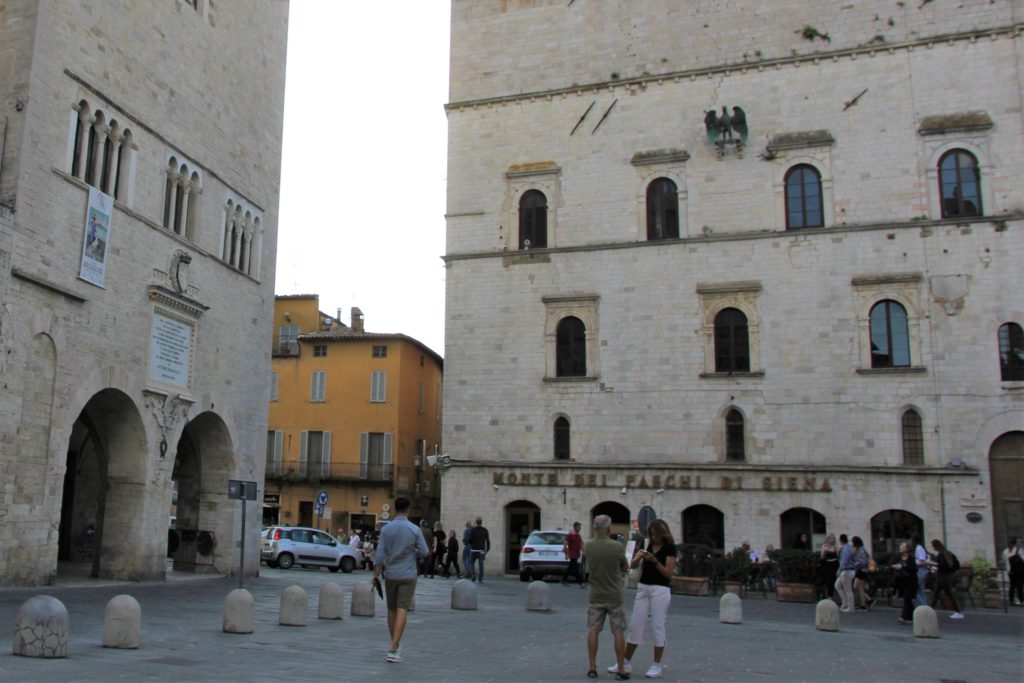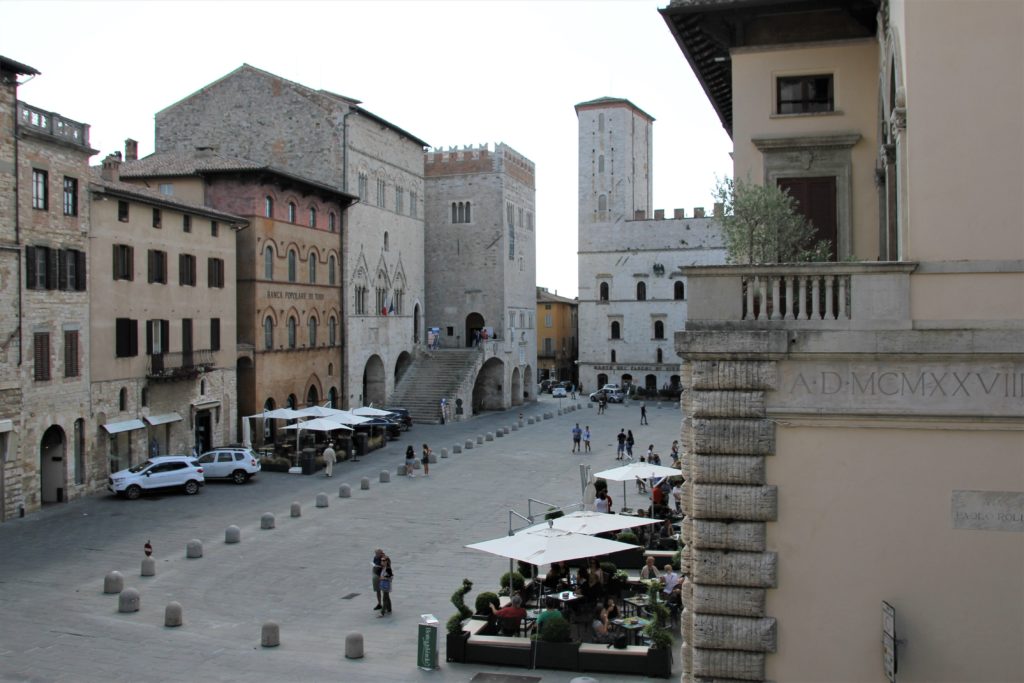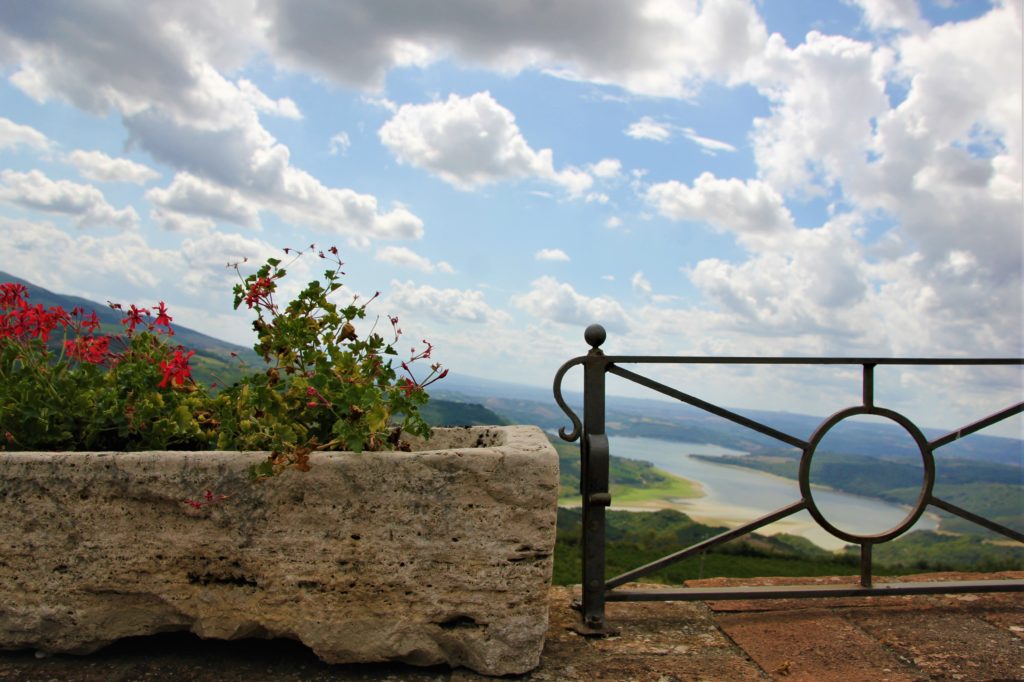Orientation flew by! It was very helpful in familiarizing myself with the city before classes started. I also had a lot of fun during our last orientation activity: a day trip to the towns of Todi and Titignano in Umbria, the province north of Rome!
 Our trip to Umbria!
Our trip to Umbria!
Our first stop was Todi, an ancient town on a hill. Todi was an hour away from the city and was at a lofty 1,350 feet above sea level; it was quite a journey! I climbed up the steps at our destination and enjoyed a wonderful view of Umbria!


Todi has a long history in Italy. Local legend has it that millenia ago, an eagle had stolen a tablecloth from the ancient people in the region and flew to the hill; the local Italic tribes followed the eagle and built Todi on the hill. The eagle is still a symbol of Todi today. I saw the Todian eagle in the Piazza del Popolo (“People’s Square’) of the town.


After its founding legend of the Todian eagle, Todi was an Etruscan town. The ancient Etruscans were from a region in central Italy that was around what is now Tuscany, which shares borders with Umbria and Lazio (the province Rome is in). They formed a major civilization in Italy that predates that of the ancient Romans. The hill was a strategic location for the Etruscans, who relied on the elevation and walls of Todi for protection against invasions.
The ancient Etruscans fought the ancient Romans in several conflicts in the 6th century B.C.E. and onward. The ancient Romans, who were not yet an empire or republic, were heavily influenced by the culture and technology of the Etruscans, basing their alphabet on those of the ancient Etruscans and adopting the Etruscan sewage system. The Roman cisterns can be accessed from a passageway in the town. The last kings of Rome were also of Etruscan descent; there were also plenty of Roman family names that come from the Etruscans.
The Piazza del Popolo in Todi was once an ancient Roman forum after the ancient Romans absorbed the Etruscan civilization. The walls of Todi were important to the Romans and to the medieval people who lived there in the Middle Ages as well. They provided the people living there with protection from the repeated invasions during times of strife across the centuries. There is also Gothic influence in the architecture of the cathedral north of the Piazza and more Classical inspiration from the Corinthian columns inside.



After our short adventure in Todi, we took a long, winding road to another town: Titignano. There, we were treated to a gorgeous view of the vineyards, lake, and stunning landscape of the region.

We had a special lunch in the early afternoon that went for two hours. We started with appetizers outside of the restaurant that comprised of pizzete crustini, or small pizzas with various toppings. Once we were indoors, we ate several courses of meats such as ham, salami, prosciutto, wild boar, venison, chicken, and lamb. We also had cheese, pastries, risotto, salad, fruit, and a delicious homemade tiramisù as part of a 14-course meal.
I liked the wild boar pasta and tiramisù the most. Some of my classmates finished their meal with espresso and biscotti with their dessert. I was not used to eating so much so late in the day (I usually eat lunch at or before noon in the States), so I ended up sleeping off the meal on the bus ride home.


We arrived back in Rome around 7:00 that evening, and with that concluded our orientation at Temple Rome! It was a pleasure getting to meet the Temple Rome staff and my fellow study abroad students on this journey. I learned a lot about life in Rome and Italian culture. Onto classes I go!


